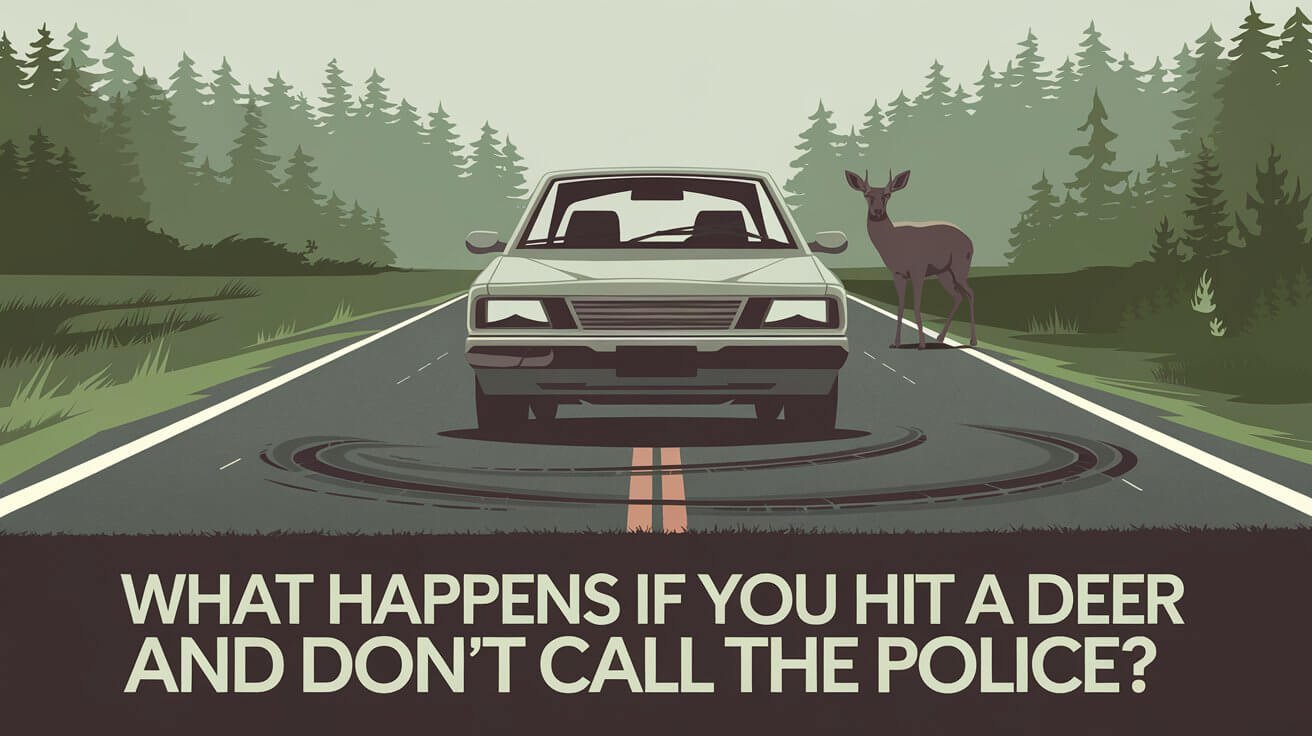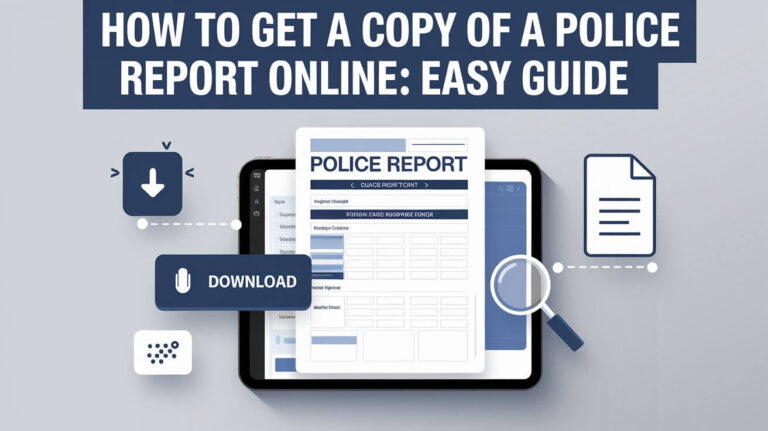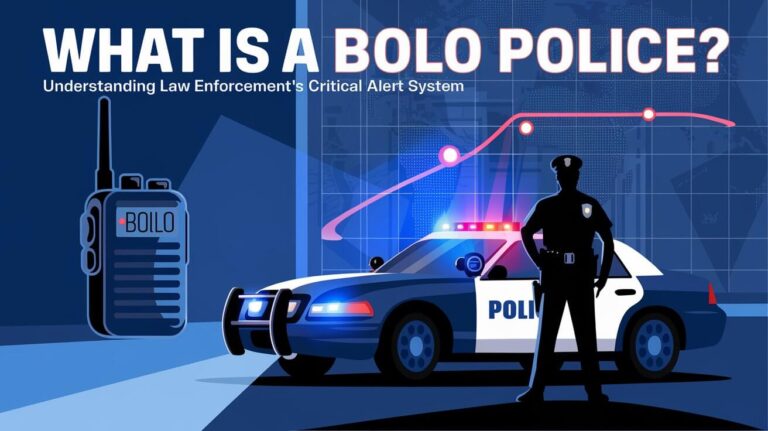What Happens If You Hit A Deer And Don’t Call The Police?

Deer-vehicle collisions are common in the U.S. State Farm says there were nearly 1.8 million auto claims for animal crashes from July 2023 to June 2024. The chance of hitting an animal is about one in 128. But, this risk goes up in areas with more deer, like in the fall.
So, what if you hit a deer and don’t tell the police? This is a big decision that could lead to serious consequences.
Legal Requirements After a Deer-Vehicle Collision
Knowing the law after hitting a deer is key. Each state in the U.S. has its own rules for such incidents. It’s important for drivers to follow these guidelines.
Mandatory Reporting Thresholds
In many places, you must report hitting a deer if the damage is over a certain amount. For example, in New York, you need to report if damage is over $1,000 or if someone gets hurt. Not reporting can lead to serious legal trouble.
In California, you must stop right away after hitting a deer. You must report it if someone gets hurt, dies, or if the damage is big.
State-Specific Documentation Requirements
The paperwork needed to report a deer accident varies by state. In New York, you have 10 days to report. California says to report right away to the Highway Patrol or local police.
Time Limits for Filing Reports
There are time limits to file reports in different places. It’s very important to meet these deadlines. Missing them can stop you from making an automotive insurance claim or facing traffic violation consequences.
| State | Reporting Threshold | Reporting Deadline |
|---|---|---|
| New York | $1,000 in damage or any injuries | 10 days |
| California | Injury, death, or significant property damage | Immediate reporting to authorities |
Knowing the rules for roadkill reporting and automotive insurance claims after hitting a deer, drivers can follow the law. This helps avoid traffic violation consequences.
Immediate Safety Steps After Hitting a Deer
When you hit a deer while driving, act fast to stay safe and follow the law. Move your car to a safe spot, like the shoulder or a parking lot. Turn on your hazard lights to warn other drivers.
If the deer is still on the road or looks hurt, call the police and EMT. They can help and keep everyone safe. While waiting, take photos of the scene and get any witness statements. These can help with insurance or legal issues.
- Stay away from the injured animal, as it may become unpredictable and pose a safety risk.
- Contact your insurance agent promptly to report the incident and initiate the claims process.
- Carefully inspect your vehicle for any damage or safety hazards before attempting to drive it again.
In states like California, here’s what to do after hitting a deer:
- Assess the scene and ensure your own safety.
- Alert the proper authorities, such as the California Highway Patrol or local police.
- Wait for emergency responders to arrive and provide assistance.
Following these steps, you can reduce risks from a wildlife crossing accident. You’ll also report the roadkill incident correctly and quickly to the right people.
What Happens If You Hit A Deer And Don’t Call The Police
Hitting a deer while driving is common, mainly in areas with lots of deer. Not calling the police after such an incident might not be illegal. But, it can still cause big legal and financial problems.
Criminal Penalties and Fines
In some places, like California, not reporting a deer collision can be a hit-and-run crime. This might lead to fines or even jail time. In New York, not reporting an accident that hurts someone can also get you in trouble.
Leaving an injured deer on the road can make things worse. It might cause more accidents and legal issues.
Impact on Insurance Claims
Most insurance companies need a police report to process claims for animal-vehicle collisions. Not reporting the accident can hurt your chances of getting compensation for property damage responsibility. Deer collision claims often rise in November, says the Highway Loss Data Institute.
Legal Liability Issues
Driving away after hitting a deer is not only against the law but also wrong. If you leave the deer in the road, it could cause more accidents. This could harm others or the deer itself.
Drivers who don’t report the incident might face serious legal trouble. This could include misdemeanor or felony charges.
It’s very important to report a deer-vehicle collision, even if it seems minor. Following state laws, working with authorities, and talking to your insurance can help avoid legal and financial issues.
Vehicle Damage Assessment and Documentation
After hitting a deer, it’s key to document everything well. Start by taking photos of the scene, the car, and any damage. Look for leaks, loose parts, tire damage, broken lights, and hood latch issues. This detailed record is vital for insurance and legal needs.
If your car is not safe to drive, call a tow truck. Even if the deer leaves, document any signs like blood or fur. This evidence is crucial for automotive insurance claims and proving property damage responsibility.
| Inspection Checklist | Importance |
|---|---|
| Photograph the accident scene | Documents the incident for insurance and legal purposes |
| Check for fluid leaks | Identifies potential safety issues and the extent of damage |
| Inspect for loose or damaged parts | Detects hidden damage that may require repairs |
| Examine tire condition | Ensures the vehicle is safe to drive after the collision |
| Document any animal remains | Provides evidence of the collision for insurance claims |
Thorough documentation and a careful inspection are crucial steps after a deer collision. This info supports your automotive insurance claims and ensures your safety and property damage responsibility are handled right.
Insurance Coverage for Deer Collisions
Hitting a deer can be a tricky situation with automotive insurance claims. Knowing your insurance coverage well can protect you in a deer-vehicle collision.
Comprehensive Coverage Details
Deer-vehicle collisions usually fall under comprehensive insurance, not collision. So, if you hit a deer, it’s a comprehensive claim, not a collision claim. Comprehensive coverage covers things like animal strikes, theft, or weather damage.
Deductible Considerations
It’s key to check your insurance policy and know your deductible. The deductible is what you pay before your insurance helps. Deductibles can differ a lot, so knowing yours is important for a deer damage claim.
The effect of a deer collision on your insurance can vary. It depends on your policy, state laws, and the accident details. Sometimes, hitting a deer won’t raise your premiums, as it’s seen as an act of nature.
| Statistic | Value |
|---|---|
| Odds of Hitting an Animal | 1 in 128 |
| Animal Crash Claims (2023-2024) | Over 1.8 million |
| Deer Collisions in New York (2018) | Over 1,000 |
Knowing your insurance well and the costs of a deer collision can help you through the claims process. It can also help keep your wallet safe.
Property Damage Thresholds for Reporting
Knowing when to report a deer collision is key for legal and insurance reasons. In New York, you must report accidents causing over $1,000 in damage. This rule often applies to deer crashes, as even small repairs can cost more than this.
In California, the rules are a bit different. While there’s no clear dollar amount, you must report significant damage. The California Vehicle Code says you need to report within 10 days if damage is $1,000 or more.
| State | Property Damage Reporting Threshold |
|---|---|
| New York | Over $1,000 |
| California | $1,000 or greater |
Not reporting a deer collision that meets the damage threshold can lead to big problems. You could face traffic violation consequences and property damage responsibility issues. Knowing and following these state rules helps drivers meet their legal duties and protect their money in a deer-vehicle crash.
High-Risk Periods and Areas for Deer Collisions
Drivers need to be careful in certain times and places for deer-vehicle collisions. Knowing when and where deer are most active can help avoid accidents. This knowledge is crucial for staying safe on the road.
Seasonal Patterns
Deer are most active at dusk and dawn, which are peak times for deer-vehicle collisions. In Illinois, most deer-vehicle crashes happen from October to December, with November being the riskiest month. This is because deer are mating during autumn.
In 2020, Illinois saw 13,787 deer-vehicle crashes. These crashes damaged property or vehicles in 13,166 cases, injured 611 people, and killed 10. The risk of a deer collision in Illinois has increased significantly.
Geographic Risk Zones
Deer collisions happen on rural roads but also in cities and suburbs. Areas with lots of roads through deer habitats, like woods and fields, have a higher risk. Deer collisions are a big problem in Illinois, second only to hunting.
In the UK, deer-related car accidents could reach 74,000 a year. This could lead to 400 to 700 injuries and 20 deaths. Deer are a problem worldwide, not just in North America.
| Location | Deer-Vehicle Collisions | Human Injuries | Fatalities |
|---|---|---|---|
| Illinois (2020) | 13,787 | 611 | 10 |
| United Kingdom (Estimated Annual) | 74,000 | 400-700 | 20 |
Cost Implications of Not Reporting a Deer Accident
Not reporting a deer accident can lead to big financial problems. If you don’t report it, your insurance might not cover the repairs. This means you’ll have to pay for the fixes yourself.
Also, not reporting can make your insurance rates go up. Insurers might see you as a higher risk if they don’t have the accident on record.
In some cases, not reporting can even lead to legal trouble. You might face fines or other penalties for not telling the authorities. This can add to your financial stress and create legal issues.
The financial impact of not reporting a deer accident goes beyond just the repair costs. It can affect your responsibility for property damage and insurance coverage. By reporting the accident and working with your insurer, you can avoid these problems.






